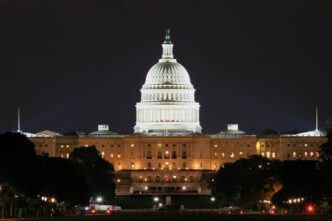Executive Summary
- Former Ambassador Luis C.deBaca reports significant personnel cuts to the State Department’s anti-trafficking office under the current administration.
- The Office to Monitor and Combat Trafficking in Persons has been moved to the Bureau of Democracy, Human Rights and Labor, a move critics call a bureaucratic downgrade.
- Experts warn that the loss of institutional memory and funding for partner agencies like USAID could hamper rapid response capabilities.
According to an interview published by OpenDemocracy on Thursday, former US Ambassador-at-Large to Monitor and Combat Trafficking in Persons Luis C.deBaca has raised significant concerns regarding the operational status of anti-trafficking initiatives under the second administration of President Donald Trump. C.deBaca highlighted bureaucratic restructuring, personnel reductions, and a loss of institutional authority within the State Department as indicators of a shifting federal priority.
C.deBaca, who previously led the Office to Monitor and Combat Trafficking in Persons (TIP), contrasted the current administrative environment with President Trump’s first term. He noted that during the first term, high-level oversight from Ivanka Trump and the influence of what he termed “governance Republicans” largely protected the TIP office and related programs at USAID and the Department of Labor from severe cuts or anti-immigrant policy encroachments. However, C.deBaca stated that recent actions executed under the “Department of Government Efficiency” have resulted in significant personnel cuts within the TIP office, describing the move as a targeting of the office due to its reputation within the national security establishment.
The former ambassador criticized the specific organizational relocation of the TIP office to the Bureau of Democracy, Human Rights and Labor. According to C.deBaca, the new organizational chart requires the ambassador to report to an assistant secretary rather than operating as an equal, which he described as a “real down-grade.” He argued this structure weakens the office’s ability to challenge regional bureaus and prioritize human rights over foreign policy expediency.
Despite the structural changes, C.deBaca acknowledged that the office successfully released an accurate Trafficking in Persons Report this autumn. However, he expressed concern that the administration may pivot toward “flash and fluff”—performative or sensationalist approaches—rather than the substantive, expert-driven work required to dismantle complex trafficking networks. He warned that without the support of agency partners like USAID, whose funding models have been altered, the ability of the TIP office to implement agile, short-term interventions in emerging crisis zones could be compromised.
Diplomatic and Administrative Impact
The restructuring of the TIP office represents a significant pivot in how the United States integrates human trafficking concerns into its broader foreign policy framework. By subsuming the office under a larger bureau and reducing its autonomous standing, the administration appears to be moving away from the specialized, high-profile diplomatic pressure that characterized the era following the Trafficking Victims Protection Act. The long-term efficacy of US anti-trafficking advocacy will likely depend on whether the diminished office can retain sufficient leverage to hold international partners accountable without the direct bureaucratic authority it previously held.








